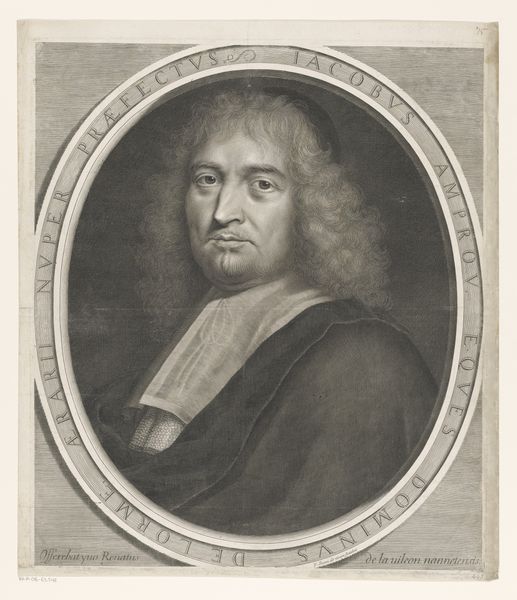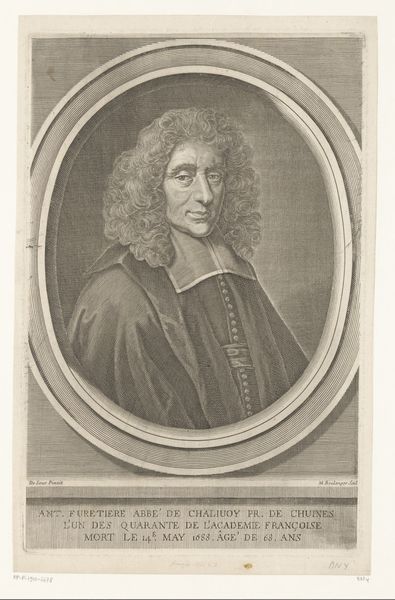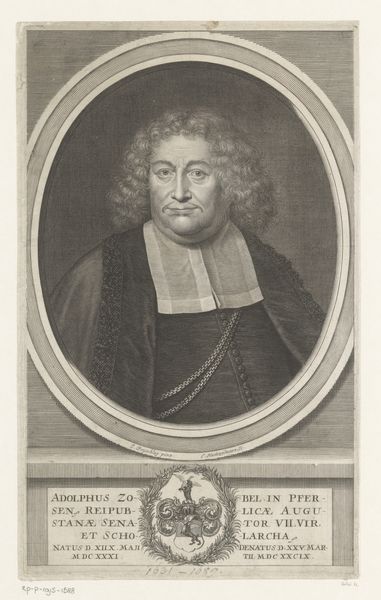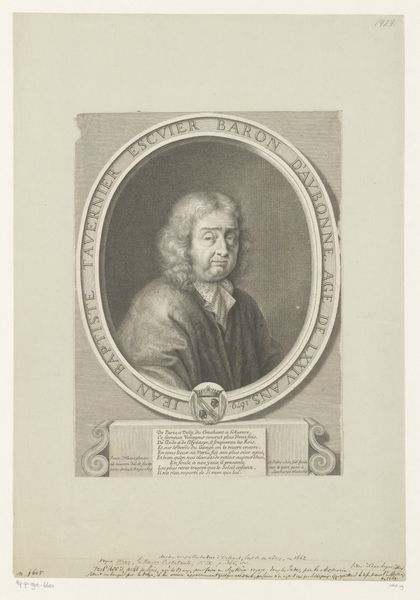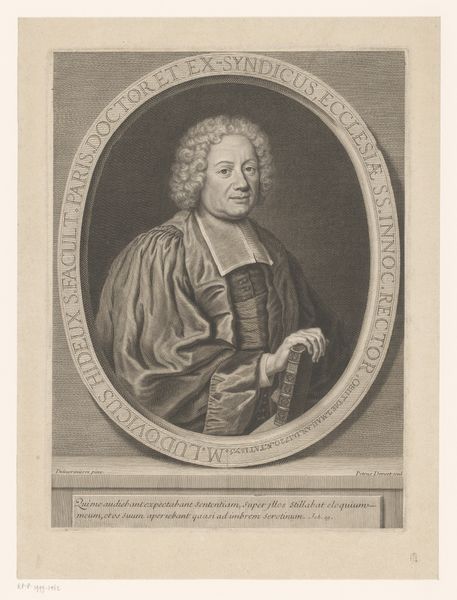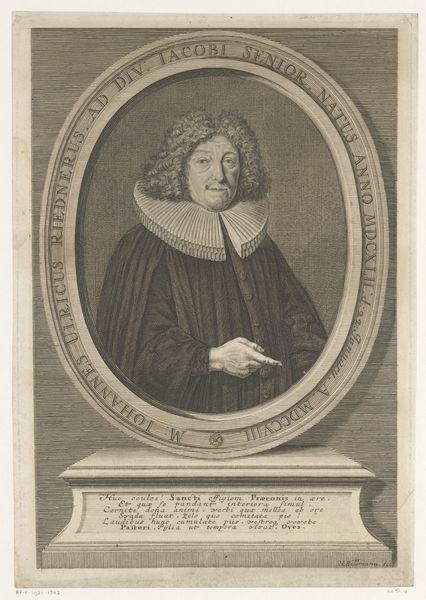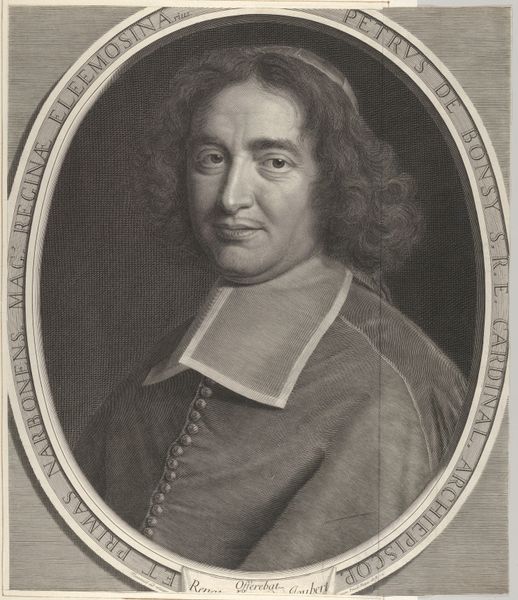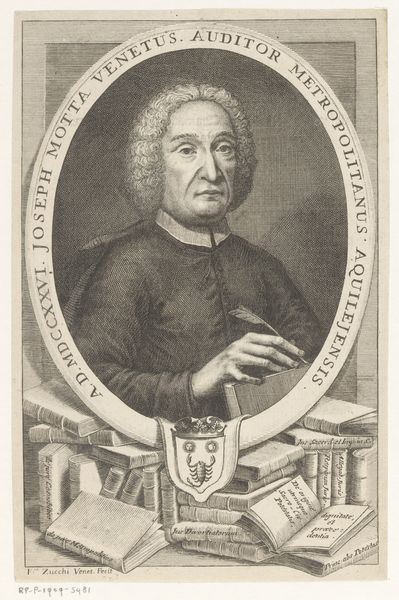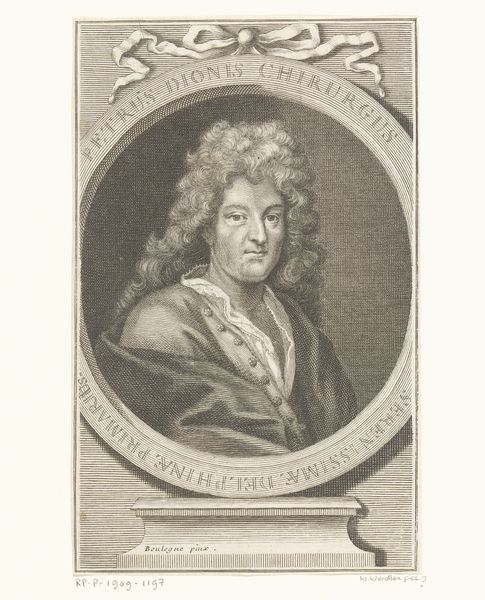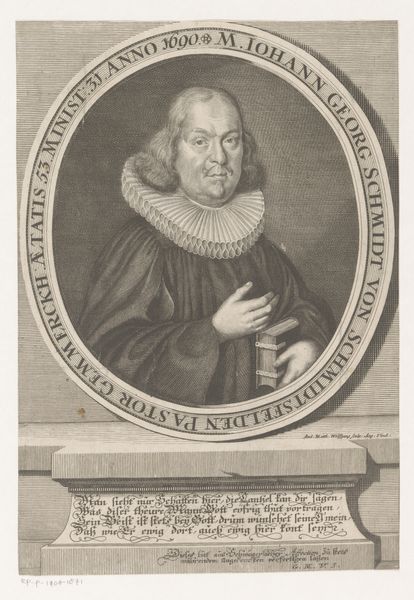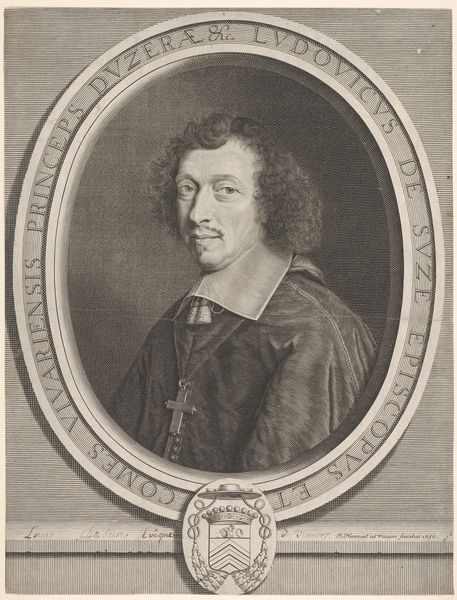
#
aged paper
#
wedding photograph
#
photo restoration
#
old engraving style
#
archive photography
#
historical photography
#
portrait reference
#
old-timey
#
framed image
#
19th century
Dimensions: height 319 mm, width 219 mm
Copyright: Rijks Museum: Open Domain
Curator: Let's consider this engraved portrait titled "Portret van Louis Moréri." The work dates between 1675 and 1727 and is attributed to Claude Duflos. Editor: It’s striking how immediately I perceive a sense of profound intellectual weight, just looking at the face—almost daunting. The framing and the stern expression amplify it. Curator: This portrayal captures the gravitas associated with Moréri’s role; a clergyman, theologian, and above all, an influential encyclopedist. Note how Duflos places Moréri within this elaborate oval frame, itself inscribed with his name and titles, "Ludovicus Moreri, Presbyter." This isn't merely a portrait; it’s a declaration of status. Editor: The text at the bottom feels like an epitaph, solidifying his legacy. Given Moréri’s work to compile knowledge, do you see this portrait as promoting an exclusive vision of education controlled by religious and scholarly elites? Curator: Absolutely. Engravings like this were often commissioned and widely disseminated, bolstering the subject's reputation but also reinforcing a specific power dynamic: learned men like Moréri, positioned as gatekeepers of knowledge, imparting wisdom from above. The act of engraving itself suggests a meticulous, authorized version of history being carefully etched. Editor: And the meticulousness extends to the rendering of his features—that cascade of curls, each appearing precisely placed—reflects the calculated performance of authority. But do these controlled images accurately embody this figure? Curator: Accuracy wasn't necessarily the primary aim. These portraits functioned to construct and disseminate an image of authority. Duflos's artistry serves a specific ideological purpose, presenting Moréri not just as an individual, but as a pillar of societal structure. It encourages reflection of the intersection between representation and power within religious and intellectual circles of that period. Editor: A powerful statement on how portraits aren’t just images, but tools wielding significant social and political leverage. Curator: Precisely, and considering this in our viewing, unveils additional facets of art's pervasive, influential role within historical contexts.
Comments
No comments
Be the first to comment and join the conversation on the ultimate creative platform.
